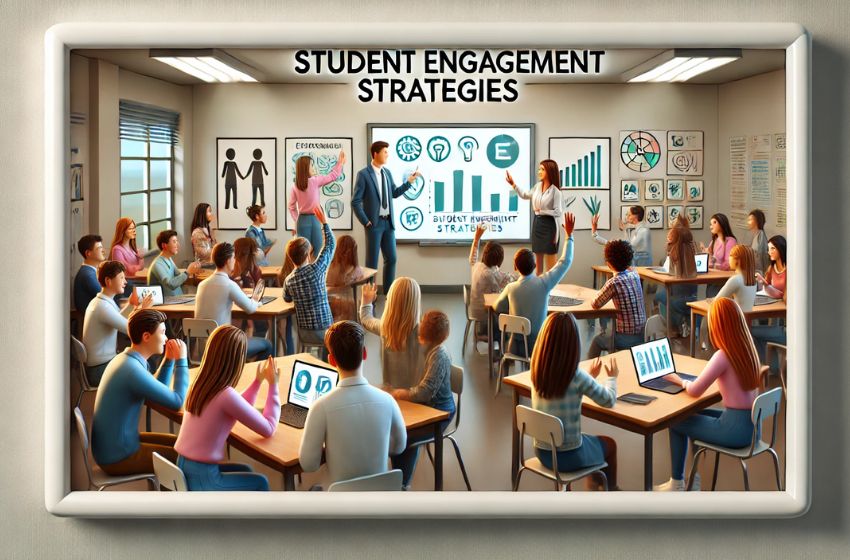Engaging Students in the Classroom: Effective Student Engagement Strategies
In today’s educational landscape, fostering student engagement is more important than ever. Engaged students are not only more motivated to learn but also exhibit better academic outcomes. For educators, understanding and implementing effective student engagement strategies can transform a classroom into a dynamic and interactive learning environment. At Wisto Journal, we delve into the key methods that can help teachers create such an environment, ensuring that students are active participants in their learning journey.
Understanding Student Engagement Strategies
Student engagement strategies refer to techniques and methods that educators use to involve students actively in the learning process. It’s about creating an environment where students are not just passive receivers of information but active participants who interact with the material, their peers, and their teachers. These strategies are designed to make learning enjoyable, relevant, and challenging, encouraging students to invest their attention and effort in their education.
At Wisto Journal, we recognize that effective student engagement can lead to improved academic performance and a more positive classroom atmosphere. Let’s explore some of the key strategies that can be employed in the classroom.
1. Active Learning Techniques
One of the most effective student engagement strategies is the use of active learning. This approach involves engaging students in activities like discussions, problem-solving, and collaborative projects. Unlike traditional lectures, active learning encourages students to process and apply the information they have learned.
For example, a teacher can use think-pair-share activities where students think about a question individually, discuss their thoughts with a partner, and then share with the class. This strategy not only helps in retaining knowledge but also fosters communication skills. At Wisto Journal, we believe that active learning is the cornerstone of maintaining student interest and participation in class.
2. Incorporating Technology in the Classroom
Incorporating technology is another powerful student engagement strategy. Using digital tools like interactive whiteboards, educational apps, and online quizzes can make learning more interactive and appealing. Technology can also provide instant feedback, allowing students to see their progress in real-time.
Teachers can use platforms that facilitate quizzes, gamified lessons, and virtual simulations. This kind of engagement makes learning fun and caters to the tech-savvy nature of today’s students. At Wisto Journal, we suggest that integrating technology is not just about using gadgets but about enhancing the learning experience.
3. Building a Positive Classroom Environment
Creating a welcoming and supportive classroom environment is essential for student engagement strategies. A positive environment where students feel safe and respected encourages them to participate actively. This can be achieved by setting clear expectations, recognizing students’ efforts, and promoting inclusivity.
Encouraging group work, respecting diverse perspectives, and celebrating small achievements can make a significant difference. Teachers can also involve students in setting classroom rules, giving them a sense of ownership. Wisto Journal emphasizes that when students feel valued, they are more likely to engage deeply in their learning.
4. Use of Real-World Connections
Another effective student engagement strategy is connecting lessons to real-world scenarios. When students see how their learning applies outside the classroom, they find the content more relevant and interesting. For instance, math teachers can relate lessons to financial literacy, or science teachers can use environmental issues as a context for their lessons.
By bringing real-life situations into the classroom, teachers can spark curiosity and inspire students to think critically about the world around them. At Wisto Journal, we encourage educators to continuously look for opportunities to make learning practical and relatable.
5. Differentiated Instruction for Diverse Learners
Recognizing that every student learns differently is crucial for student engagement strategies. Differentiated instruction means adapting teaching methods to meet the varying needs of students. This might include providing visual aids for visual learners, hands-on activities for kinesthetic learners, and discussions for auditory learners.
By tailoring instruction to individual learning styles, teachers can ensure that every student remains engaged. This approach not only accommodates diverse learning needs but also helps in building a more inclusive classroom environment. Wisto Journal believes that differentiated instruction is key to keeping all students on the path to success.
6. Encouraging Student Voice and Choice
Empowering students by giving them a voice and choice in their learning is a critical student engagement strategy. When students have a say in how they learn or what topics they explore within a subject, they are more likely to feel invested in the process.
Teachers can implement this by allowing students to choose from various project options, lead classroom discussions, or participate in decision-making about class activities. Such autonomy fosters a sense of responsibility and ownership over their education. At Wisto Journal, we highlight the importance of student agency in maintaining long-term engagement.
7. Collaborative Learning Opportunities
Group activities and peer collaboration can greatly enhance student engagement. Through collaborative learning, students work together on projects, engage in group discussions, and solve problems collectively. This fosters teamwork, communication skills, and a sense of community in the classroom.
For example, a science teacher might have students work in teams to conduct experiments, or a language teacher might use group storytelling activities. These experiences not only make learning more interactive but also teach students the value of diverse perspectives. Wisto Journal advocates for the use of collaborative learning as a way to build connections and enhance engagement among students.
8. Continuous Feedback and Reflection
Providing continuous feedback and opportunities for self-reflection helps students understand their progress and areas for improvement. This student engagement strategy involves giving constructive feedback on assignments, encouraging self-assessment, and holding regular one-on-one sessions.
When students receive regular feedback, they can adjust their strategies, set goals, and feel more connected to their learning process. Reflection activities, like journaling or class discussions about what they have learned, can also help students internalize their progress. Wisto Journal suggests that feedback and reflection are vital for keeping students engaged and motivated.
9. Incorporating Play and Creativity
Play and creativity are often underestimated in the learning process but are powerful student engagement strategies. Incorporating creative tasks such as role-playing, art projects, and storytelling can make learning more enjoyable. Gamified lessons or using creative writing prompts can be particularly effective for younger students.
For older students, incorporating elements of debate, simulation games, or even designing their own projects can make learning more dynamic. Wisto Journal encourages the use of creativity in the classroom, as it allows students to explore new ways of thinking and expressing themselves.
10. Creating a Culture of Curiosity
Encouraging curiosity is a core student engagement strategy that helps students become lifelong learners. Teachers can do this by asking open-ended questions, fostering inquiry-based learning, and allowing students to explore topics that interest them.
For example, a history teacher might ask students to research and present on a historical figure they find fascinating. This approach not only deepens understanding but also motivates students to delve deeper into subjects. At Wisto Journal, we believe that a culture of curiosity transforms classrooms into places of discovery and excitement.
Conclusion: The Power of Student Engagement Strategies
Implementing effective student engagement strategies can make a world of difference in the classroom. From active learning to fostering a culture of curiosity, these methods ensure that students are not just passive learners but active participants in their educational journey. At Wisto Journal, we emphasize the importance of these strategies in creating a positive and productive learning environment. By using a combination of these techniques, teachers can inspire students to reach their full potential.



